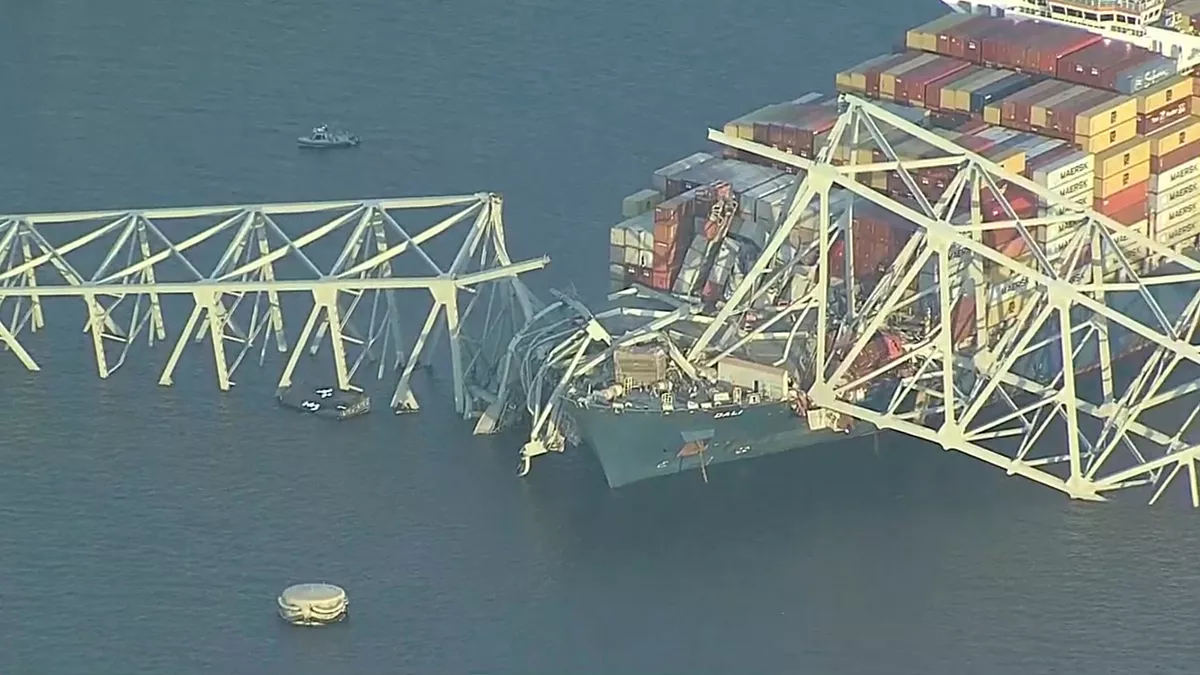In a dramatic turn of events, a massive cargo ship departing from the Port of Baltimore suffered a catastrophic loss of power, leading to a harrowing collision with the Francis Scott Key Bridge in the early hours of Tuesday. The vessel, identified as the Dali, issued a mayday call just moments before striking the bridge, prompting swift action from officials to halt traffic and attempt the evacuation of the span, averting a potential disaster.
)
Tragic Loss and Heroic Actions
Amidst the chaos, six construction workers tasked with road repairs on the bridge went missing, while two others were rescued. Despite the valiant efforts of emergency responders, the fate of the missing workers remained uncertain as search operations unfolded. Governor Wes Moore declared a state of emergency, emphasizing the heroic actions of those who intervened to stop traffic and prevent further casualties. Despite the devastation, there was no evidence of a terrorist attack, offering a glimmer of relief amidst the tragedy.
Investigation and Accountability
As the investigation into the collision intensifies, state and federal authorities mobilize to unravel the circumstances leading to the incident. Transportation Secretary Pete Buttigieg’s impending visit underscores the gravity of the situation, as officials seek to ascertain accountability and prevent similar tragedies in the future. Questions surrounding the safety standards of maritime vessels and the resilience of bridge infrastructure echo concerns raised by previous incidents, highlighting the urgent need for enhanced oversight and precautionary measures.
Unfolding Details and Global Implications
The collision between the cargo ship and the Francis Scott Key Bridge marks yet another alarming incident involving maritime vessels and major roadways. The proximity of the crash to densely populated areas underscores the potential risks posed by maritime traffic, necessitating robust safety protocols and contingency plans. Against the backdrop of global shipping operations, the incident serves as a sobering reminder of the interconnectedness of maritime and land-based transportation networks, emphasizing the imperative of stringent regulations and proactive risk mitigation strategies.
:max_bytes(150000):strip_icc():focal(931x428:933x430)/baltimore-francis-scott-key-bridge-collapse-032624_2324-2b25e530eb874618a415d3cf037a0e95.jpg)
As rescue efforts continue and investigations progress, communities grapple with the aftermath of the tragedy, mourning the loss of lives and grappling with the profound impact of the collision. In the face of adversity, solidarity and resilience emerge as guiding principles, driving efforts to honor the memory of the victims and ensure the safety of all who traverse vital transportation arteries.
